Invented by Robert Hanson, Barry Sudduth, Don Detar, Merative US LP
One of the key drivers of this market is the rising prevalence of chronic diseases such as diabetes, asthma, and chronic obstructive pulmonary disease (COPD). These conditions require long-term medication management, and the incorporation of tracking codes in drug delivery devices helps healthcare providers track patient adherence and adjust treatment plans accordingly. This not only improves patient outcomes but also reduces healthcare costs associated with disease exacerbations and hospitalizations.
Additionally, the growing trend of personalized medicine is fueling the demand for drug delivery devices with tracking codes. Personalized medicine aims to tailor treatment plans to individual patients based on their genetic makeup, lifestyle, and other factors. By incorporating tracking codes, healthcare providers can gather real-time data on patient response to medication, enabling them to make more informed decisions about dosage adjustments and treatment modifications.
The use of tracking codes in drug delivery devices also benefits pharmaceutical companies by providing valuable insights into medication usage patterns and patient behavior. This data can be used to improve drug development, optimize marketing strategies, and enhance patient engagement. Moreover, the ability to track medication usage can help pharmaceutical companies identify potential issues with drug delivery devices, allowing for timely interventions and improvements in product design.
The market for drug delivery devices incorporating tracking codes is witnessing technological advancements that further enhance their functionality and usability. For instance, many of these devices are now equipped with wireless connectivity, enabling seamless data transfer to healthcare providers’ systems. This allows for real-time monitoring and remote patient management, reducing the need for frequent clinic visits and enhancing patient convenience.
However, there are some challenges that need to be addressed for the widespread adoption of drug delivery devices with tracking codes. Privacy and security concerns regarding the collection and storage of patient data are of utmost importance. Healthcare providers and pharmaceutical companies must ensure that appropriate measures are in place to protect patient information and comply with data protection regulations.
Furthermore, the cost of these devices may pose a barrier to their adoption, especially in developing countries with limited healthcare resources. Efforts should be made to make these devices more affordable and accessible to a wider population.
In conclusion, the market for drug delivery devices incorporating a tracking code is expanding rapidly due to the increasing demand for personalized medicine and improved patient adherence. These devices offer numerous benefits, including enhanced patient outcomes, reduced healthcare costs, and valuable insights for pharmaceutical companies. However, challenges related to privacy, security, and affordability need to be addressed to ensure the widespread adoption of these devices.
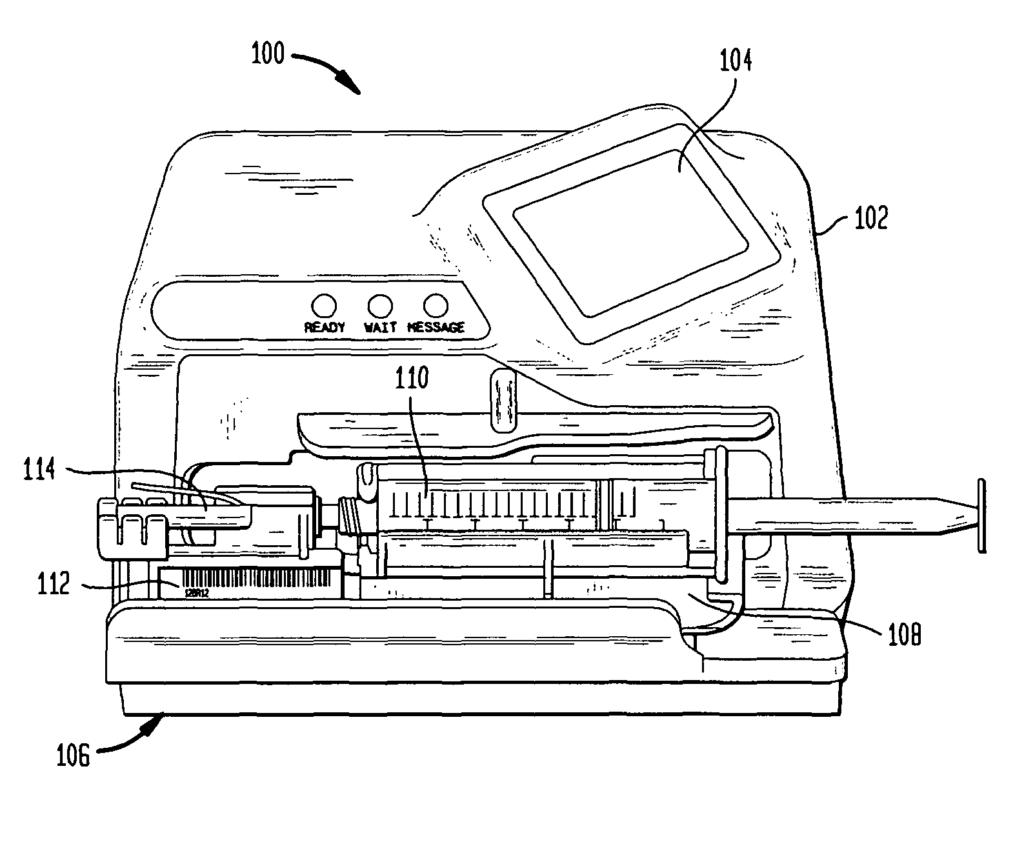
The Merative US LP invention works as follows
A tracking codes is adhered to the syringe labels cradle in order to track each activity relating to the syringe labels cradle. For example, drug preparation and inventory, dispensing of drugs, administration of drugs, drug returns, charges for drugs, etc. The tracking code can be in bar code or another machine-readable code as well as in human-readable indicia. The tracking code allows for the tracking of events that pertain to a particular syringe, from its preparation with a prescription drug until it is disposed of or returned to a pharmacy. The log relates the patient with the drug and any information entered in relation to the tracking code.
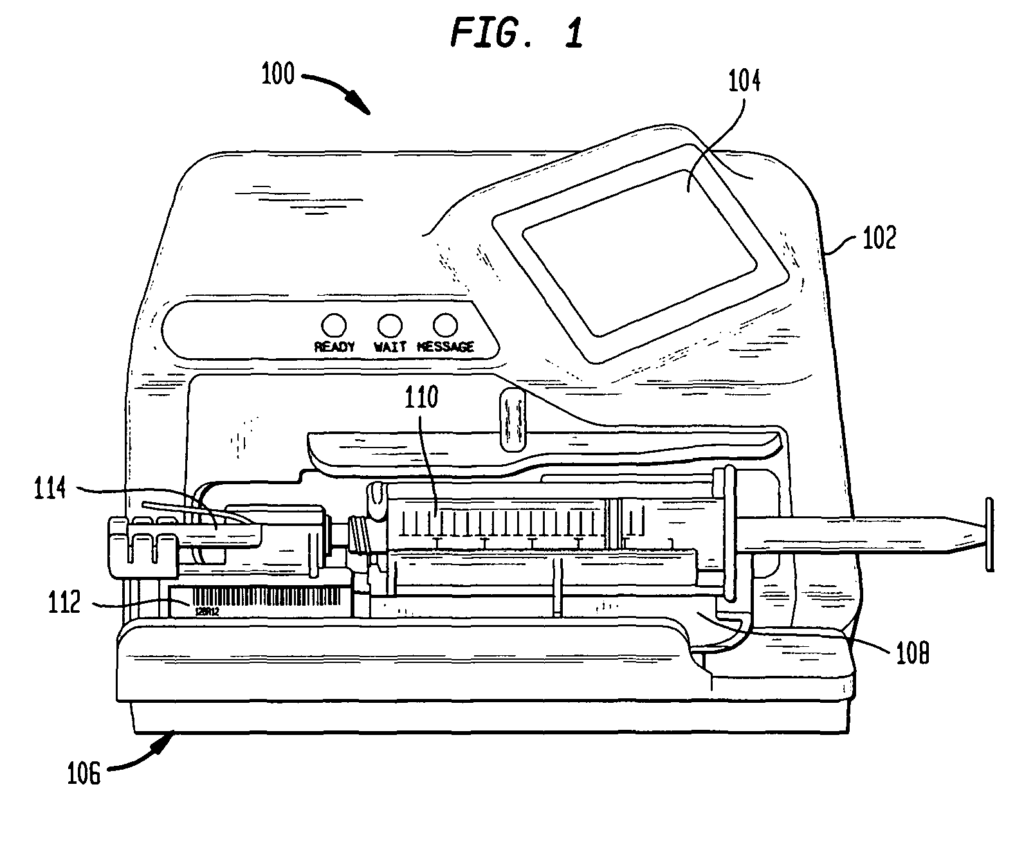
Background for Drug Delivery Device incorporating a Tracking Code
The present invention is a general drug delivery system and, more specifically, a unique tracking codes associated with a device used to deliver drugs to patients. This code allows the physician to create and retrieve a log of data relating to the patient, the drug, and the device.
In hospitals and other surgical centers, the manual dispensing of medications from a pharmacy to administer to a patient has become a standard practice. The pharmacy department fills syringes of drugs and administers them to patients. Documentation is done retrospectively by physicians or other health professionals. Drug diversion, medication mistakes, errors of admissions, medication contamination, and accidental needle sticks are all possible due to human error. Emergency situations can also make the process more difficult, as they require a quick setup and administration, and less time for accurate and timely record keeping. There is no record of a syringe’s history from the moment it was filled until the time that the sterile syringe is disposed of or returned to the pharmacy.
Walker, et al., U.S. Pat. No. The present application is based on U.S. Patent No. 5,651,775, which was assigned to the same assignee as the patent in question. This patent, which has been incorporated by reference herein, discloses a system for monitoring and delivering drugs to patients. Drugs are delivered safely to a patient and monitored live during the delivery. Important events during the delivery are also recorded to provide online information and details to an audit trail. The drug delivery and monitor system includes a scanning module as well as a syringe-label cradle and cassette tray. The syringe cradle acts as both a holder for a drug-containing syringe and a positioner. The syringe cradle can be constructed in multiple sizes to accommodate different syringe sizes. This allows for a constant needle position of the combined unit regardless of syringe volume. The syringe will be positioned in the cradle, and then a pre-printed label with self adhesive is attached to it. The label contains drug identification information and preparation information, such as dosage and concentration. This can be displayed in a form that is machine-readable or human-readable such as a bar code. The label information is read automatically into the system using an optical barcode scanning module, for example.
A number of syringe-label cradle unit, that is, combination syringe-label cradle with syringe are placed in a cassette tray to be transported and stored before, during, and after use. The cassette tray is generally organized so that the syringe labels cradles are arranged in a logically advancing order. The cassette tray aligns with the injection port, which is usually connected to the needleless IV set. The scanning module includes bar code scanners or other digital indicators to read labels attached to the syringe cradle. The information on the label takes the form of a code that identifies, for example the drug in the associated syringe. It also identifies the size of the associated syringe. The scanning module is also used to monitor syringe movement while the drug is administered. This allows for real-time drug administration dynamics, such as determining the delivery rate and quantity of administered drugs.
The need for improved drug administration systems that provide a variety medical devices (e.g. preloaded syringes, IV ports) with machine-readable and/or readable information is a necessity. This will allow accurate tracking of events in the history of a medical device.
The tracking code system described herein can be used to track a wide range of medical devices and applications, including but not limited injected drugs. The term “medical device” is used in a broad sense. As used herein, the term “medical device” includes any syringe applications, IV ports or drug vials and ampules as well as non-injectable fluids. The present invention is a tracking system that uses a code to identify a syringe label unit or a port label unit, as will be described in more detail below.
As discussed in Walker et. al., a syringe-label cradle is a product that can only be used once and is designed to hold a specific syringe, both by manufacturer and size. SLCs have been designed to fit standard syringe sizes. SLCs and syringes that form a syringe label unit, which is a combination of the two, are encoded with patient-specific tracking codes. As an example, the patient-specific tracking code can be encoded as a barcode that is machine-readable. The bar coded SLC includes a unique numeric area of 22 characters, for instance. Encoding is done in the pharmacy, or another designated area for preparation. A bar code label will be mounted on the SLC’s flange. The SLCs are then matched to the standard syringes and placed in administration order in a cassette tray. The encoded SLC allows for accurate tracking and drug delivery data.
The bar code tracking code is generated by computer using a time stamp, drug identification data and a time stamp. The tracking code will be associated with each activity that the SLC performs. This includes drug preparation, inventory, dispensing of drugs, administration of drugs, return or credit for drugs, etc. The tracking code allows for the tracking of events related to a specific syringe, or other medical devices such as an IV attached to a person. Every time an SLC delivers a drug, a log containing all the information in the patient and drug databases is created. The tracking code allows specific drug usage to be tracked. This is useful for FDA drug recalls, narcotics control and drug research – both important areas in pharmacy practice. Narcotic control is required by federal and state laws. The host database server retrieves detailed information about the medication to be administered. This includes the name, concentration and expiration date/time of the medication, as well as the technician who will administer it. The information can be stored on the server or a remote server (i.e. Ethernet/network implementation).
According to one embodiment of the invention, there is a medical device that administers a drug. The device comprises a source for a drug administered to the patient, a holder to hold the source and a tracking number that is associated with the source.
According to another embodiment of the invention, there is a syringe cradle that includes a syringe, attached to the cradle. A tracking code is also attached to one or both of the cradle as well as the syringe.
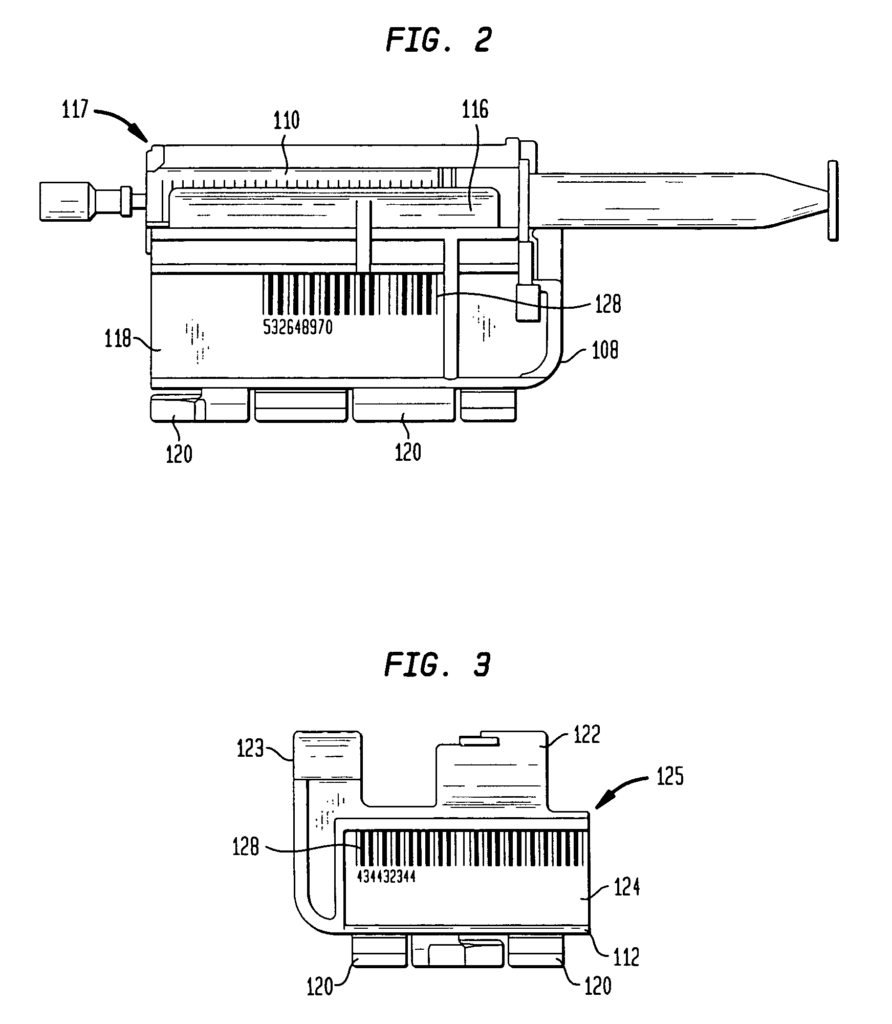
According to another embodiment of the invention, a port-label cradle is described. It consists of a port-label cradle with an IV port attached, and at least one tracking code on the cradle or the IV port.
The method described in accordance with an alternative embodiment of the invention is a method of tracking data that is associated with a device designed to administer a drug. It involves providing the patient with a source for the drug, assigning a tracking code to the source, supplying data related to the drug, and storing data with the tracking code.
The following method is described in accordance with an embodiment of the invention: “In accordance to another embodiment of this invention, there is described a way to track data associated with a device that administers a medication to a person, comprising a source for the drug, attaching it to a cradle and a label with a barcode corresponding to the tracking codes affixed on the source and cradle. The method also comprises identifying the data associated with both the drug and patient, identification, with the patient, retrieving a tracking code, tracking the code, tracking the device, tracking the device, tracking the device, tracking the device, tracking the device, a tracking the device, affecting affixing affixed to the affecting afusing the af
The system described in accordance with an alternative embodiment of the invention is a system to track data associated with a device that can be used to administer a medication to a person. This device includes a cradle with a source attached, which contains a substance to be administered, as well as a tracking code, which is associated with either the cradle or the source. It also has a storage device and retrieval device to store and retrieve data about the drug associated with the tracking code.
For clarity, “In describing preferred embodiments of subject matter shown and to be described in relation to the drawings,” specific terminology will be used. The invention does not intend to be limited by the terms chosen and it is understood that all technical equivalents are included in each term which work in a similar way to achieve a similar goal.
Referring to the drawings where like reference numbers represent like elements, it is shown on FIG. A drug administration and monitoring system, generally denoted by the reference number 10, is shown in Figure 1. As illustrated in the example, the device 10 is a peripheral device that uses bar code scanning and digital imaging technologies to deliver intravenous medications. The device 10 records drug deliveries in real-time and allows for instant interaction with drug and patient databases. The clinician is alerted before an adverse drug reaction or medication mistake can happen. MedDoc, Inc., Mobile, Ala. sells a device 10 that is similar to the one described above under the name DocuJect.
The device 100 comprises a housing (102), which houses the electronic components, and other microelectronic devices such as a microprocessor or memory devices. The housing 102 holds a display, such as a liquid-crystal display. The display 104 displays information and data to the physician or other health care professional during the operation of the device. The device 100 comprises a scanning module (106), which contains an optical or another scanning device, which supports in operative relation a syringe cradle 108 (SLC), to which is attached a 110 syringe and a port-label cradle (112) to which is attached patient IV port 114. Walker, et. al. provide a detailed description of how the device 100 works, including its basic functions. patent.
As shown in FIG. The SLC 108, a product for single use, is designed to accommodate syringes of different sizes. A cradle 116 is used to attach the syringes 110 to the SLC 108. SLC 108 with syringe 116 will be referred hereinafter to as syringe cradle 117. The SLC 108 has a generally plane flange 118 that supports one or more sliding engagement members 120. The slide engagement member 120 is received in a corresponding section of the scanning modules 106. This allows the SLC to be moved longitudinally within the scanning modules, and also positions the needle of syringe 108 into the patient’s IV ports 114. Walker, et. al. provide a more detailed description of SLC 108 as well as SLCU 117. Patent, as well in the co-pending U.S. Application Ser. No. No. The present application was assigned to the same assignee as the previous one, whose disclosures are incorporated by reference herein.
Referring to FIG. The PLC 112 has a configured cradle and IV tubing holders 123 that allow for the attachment of the patient’s IV port 114. Port label cradle units (PLCUs) 125 will be used to refer to the combined PLC 112 with IV port 114 and optionally, the tubing holder. The tubing holder and cradle are attached to the planar flange (124), which has a similar construction as flanges 118. On the free end of the flange, one or more slide engagement member 126 are attached, which is similar to slide members 120. The slide engagement members 126 allow the PLC 112 (see FIG.) to be received longitudinally and slidingly within the scanning module 106, in contrast to the SLCU 117. 1. PLC 112 is a one-time use product that holds the IV port 114 on the IV line of the patient in the proper position for the injection of drugs using selected SLCUs 117. The PLC 112 stabilizes the syringe to allow the device 100 to accurately and reliably read the movement of the plunger on the syringe. The SLC 108 also stabilizes the syringe in the correct position to accurately scan the syringe movement for determining the drug administration.
The PLC 112 helps to reduce needle stick injuries by eliminating the requirement for clinicians handle the injection port of the IV line every time they inject medication. The PLC 112 provides protected IV access and reduces contamination, which can lead to nosocomial infection. In the co-pending U.S. Ser. No. No. 09/813.547, entitled “Drug Delivery System and Monitoring System” Filed on March 21, 2001 in the name of Evans and assigned to the same assignee as this application. The application was filed on March 21, 2001, in the name Evans and assigned to Evans’ assignee.
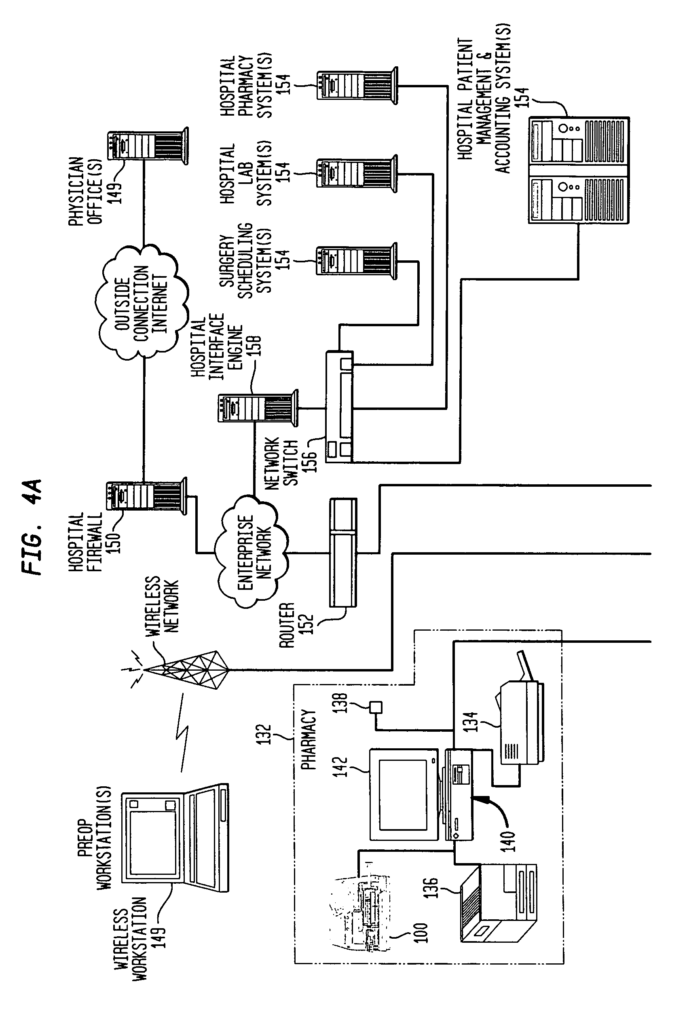
The tracking code system will be described in detail for illustration purposes using an SLCU 117 with an SLC 108, syringe 111 and a syringe 110. The tracking code system is adaptable to other medical devices such as the PLCU 125. According to the present invention the syringe and drug contained in it are associated with a track code that can be displayed either in machine or human-readable form. The tracking code can be, for example, a barcode 128 that is easily readable by optical scanners such as scanning module 106. The tracking code can also be represented as alphanumeric and numeric characters and numbers that are readable by both humans and machines, or combinations thereof. The tracking code is used to track all activities related to a specific drug-loaded syringe, such as drug preparation, patient information, identification of the physician and pharmacist, diagnosis, dates, drug inventory, dispensing of drugs, administration of drugs, drug returns, credit or charges, etc. The tracking code is associated with a data and information log that links the patient’s specific medication to drug databases. The tracking code is useful in FDA drug recalls as well in drug research and narcotics control, and also facilitates compliance with federal and State laws requiring narcotics control.
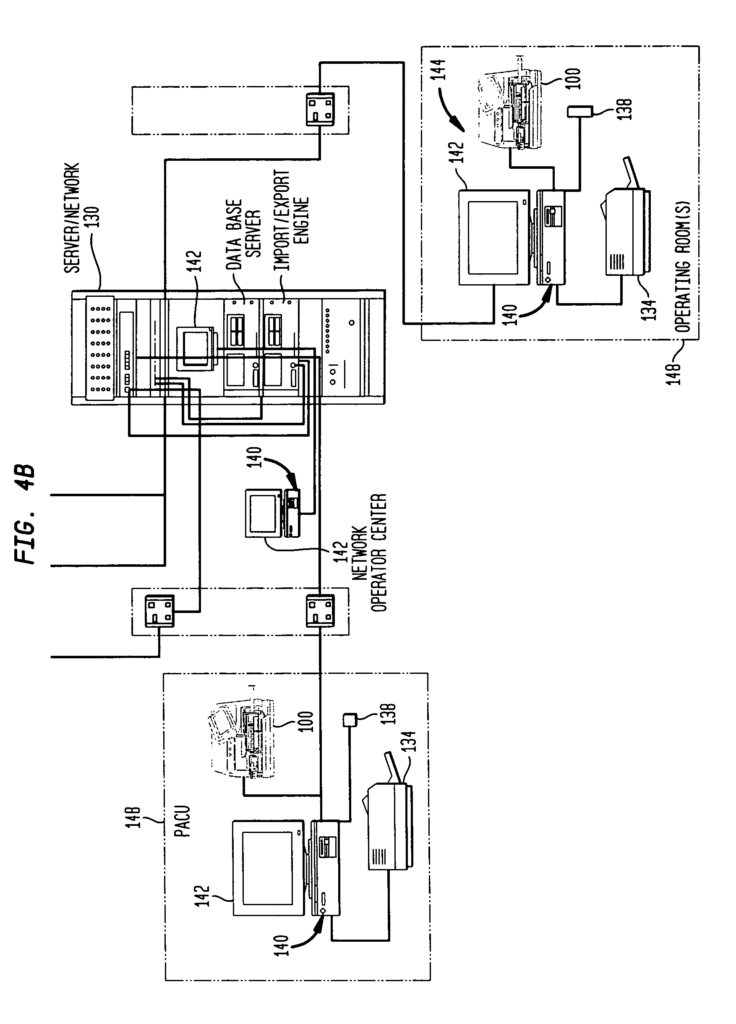
Click here to view the patent on Google Patents.
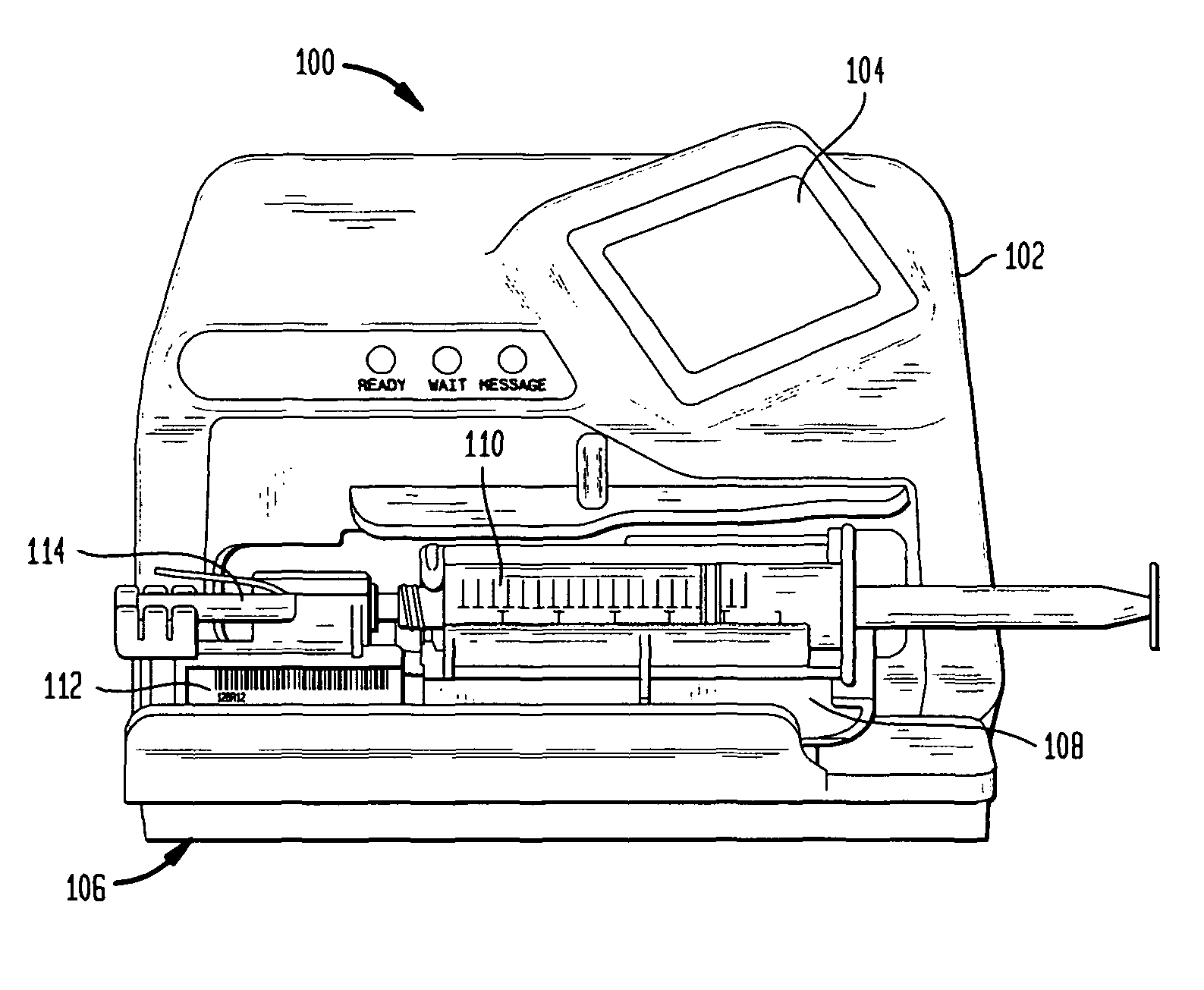
Leave a Reply